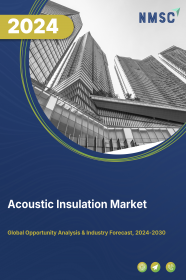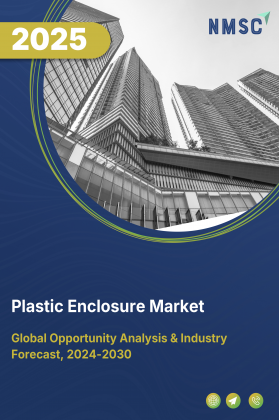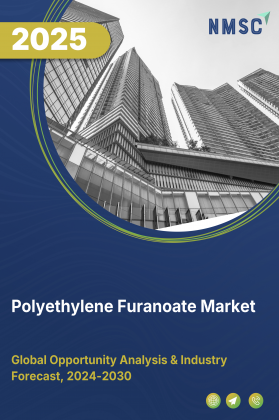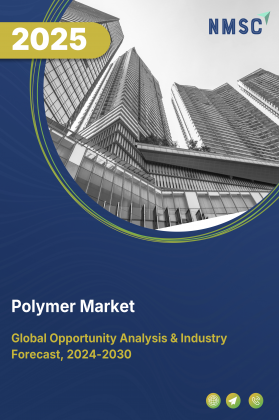
Acoustic Insulation Market by Material Type (Stone Wool, Glass Wool, Plastic Foam, and Others), by Sales Channel (In Store and Online), and End-User Industry (Building & Construction, Transportation, Industrial, Energy and Utilities, Oil and Gas, and Others)- Global Opportunity Analysis and Industry Forecast 2022-2030
Market Definition:
The Acoustic Insulation Market size was valued at USD 13.82 billion in 2021, and is expected to reach USD 19.84 billion by 2030, with a CAGR of 4.1% from 2022 to 2030. Acoustic insulation, also known as the soundproof insulation, helps in preventing sound from entering or exiting an enclosed space by creating some barrier between the interior and the exterior areas.
Acoustic design is a complicated aspect of architecture and construction that is used to create acoustic insulation systems to achieve optimal building sound quality. Transfer of airborne and structural sounds between various rooms in a building is prevented by insulation.
Acoustic insulation is necessary since noise pollution is capable of causing harmful effects on the human health causing hypertension, hearing problems, psychological issues, and sleep disturbances, among others. In general, there are four types of acoustic insulation, namely, blanket and batts, gypsum panels, acoustic panels, and viscoelastic products, which finds its application in industries such as oil & gas, energy & utilities, building & construction, and petrochemical, among others.
Market Dynamics and Trends:
The demand for acoustic insulation is increasing as these materials offer better fire resistance, thermal resistance and reduced energy consumption. Also, it helps to reduce reverberations to maintain perfect acoustic environment in professional spaces such as recording studios, opera halls, and theatres. In addition, the improvements in standard of living and infrastructural activities in building & construction sector in developed and developing countries are driving the acoustic insulation market.
Moreover, increase in government initiatives related to mitigating noise pollution proposals such as National Ambient Noise Monitoring Network (NANMN) and Clean Air Act Title IV for controlling noise pollution and construction of energy efficient buildings across developing economies such as India, Saudi Arabia, Mexico, and South Korea are also responsible for driving the growth of the market.
Furthermore, rising focus on improving the building infrastructure to offer convenient and peaceful environment, especially in public places, has led to increase in installation of sound insulation barriers across construction sites, railway stations, highways, and airport runways, among others which is expected to drive acoustic insulation demand globally during the forecast period.
However, low awareness about the importance of acoustics in emerging countries and high cost of products are some of the factors which restrain the growth of the market. On the other hand, increasing focus on the use of environment-friendly bio-based products over synthetic materials lead to innovation in bio-based acoustic materials, and is expected to create lucrative opportunities for acoustic insulation market players in future.
Market Segmentations and Scope of the Study:
The acoustic insulation market is segmented on the basis of material type, sales channel, end-user, and geography. On the basis of material type, the market is classified into stone wool, glass wool, plastic foam, and others. On the basis of sales channel, the market is bifurcated into in-store and online. On the basis of end-user industry, the market is classified into building & construction, transportation, industrial, energy and utilities, oil and gas, and others. The geography breakdown and analysis of each of the aforesaid segments include regions such as North America, Europe, Asia-Pacific, and RoW.
Geographical Analysis:
Asia-Pacific region is expected to hold the lion’s share in the global acoustic insulation market during the forecast period. This is attributed to factors such as fast-paced expansion of the economies such as Indonesia and China due to growing population, rapid industrial expansion, and increased consumer spending, among others.
Furthermore, increasing disposable income and rapid urbanization are the key factors that drive the demand for acoustic insulation in India. In addition, the presence of key players such as H.S. Engineers, Langfang Osking Business Co. Ltd., ACOEM Group, and Guangzhou Hui Acoustics Building Materials Co. Ltd. is expected to propel the growth of the acoustic insulation market in this region in the upcoming years.
Europe is expected to show a steady rise in the global acoustic insulation market during the forecast period. It is attributed to factors such as the regulations about building acoustic insulation, noise control for transportation and industrial equipment, and others which are responsible for the product penetration in the region. Also, increasing awareness about green construction and smart infrastructure in this region is expected to augment the market growth in the upcoming years.
Furthermore, stringent regulations imposed by the U.K. government for the construction of school buildings lead to implementation of a minimum acoustic performance standard. The standard used is known as Building Bulletin 93 and implementation of such standards is driving the growth of the market during the forecast period in this region.
Competitive Landscape:
Various market players operating in the global acoustic insulation market include Rockwool International, Saint-Gobain, Knauf Insulation, InsulTech, Armacell International, Soprema, Huntsman, Owens Corning, Kingspan Group, and Johns Manville, among others. The key market players are actively indulging in R&D initiatives, product & technology innovations, and industrial collaborations to enhance their product portfolio and increase their geographical reach.
For instance, in January 2021, Armacell partnered with German TITK Group and Melamine to manufacture affective acoustic insulation products with melamine resin-based nonwovens. Moreover, in July 2020, InsulTech announced the expansion of its plant in Yuma, the U.S., effectively doubling the manufacturing space at the site. This new plant will be used to produce foil encapsulated insulation blankets for transportation, industrial, and aerospace applications.
Key Benefits
-
The acoustic insulation market report provides the quantitative analysis of the current market and estimations from 2022 to 2030. This analysis assists in identifying the prevailing market opportunities to capitalize on.
-
The study comprises a deep dive analysis of the acoustic insulation market trends including the current and future trends for depicting the prevalent investment pockets in the market.
-
The information related to key drivers, restraints, and opportunities, and their impact on the acoustic insulation market is provided in the report.
-
The competitive analysis of the market players along with their market share in the acoustic insulation market is mentioned.
-
The SWOT analysis and Porter’s Five Forces model are elaborated in the study.
-
The value chain analysis in the market study provides a clear picture of the stakeholders’ roles.
Key Market Segments:
By Material Type
-
Stone Wool
-
Glass Wool
-
Plastic Foam
-
Others
By Sales Channel
-
In-Store
-
Online
By End-User Industry
-
Building & Construction
-
Transportation
-
Industrial
-
Energy and Utilities
-
Oil and Gas
-
Others
By Geography
-
North America
-
U.S.
-
Canada
-
Mexico
-
-
Europe
-
U.K.
-
Germany
-
France
-
Italy
-
Spain
-
Rest of Europe
-
-
Asia-Pacific
-
China
-
India
-
Japan
-
South Korea
-
Australia
-
Rest of Asia-Pacific
-
-
RoW
-
UAE
-
Saudi Arabia
-
South Africa
-
Brazil
-
Remaining countries
-
Key Players
-
Rockwool International
-
Saint-Gobain
-
Knauf Insulation
-
InsulTech
-
Armacell International
-
Soprema
-
Huntsman
-
Owens Corning
-
Kingspan Group
-
Johns Manville
REPORT SCOPE AND SEGMENTATION:
|
Parameters |
Details |
|
Analysis Period |
2021–2030 |
|
Base Year Considered |
2021 |
|
Forecast Period |
2022–2030 |
|
Market Size Estimation |
Billion (USD) |
|
Market Segmentation |
By Material Type (Stone Wool, Glass Wool, Plastic Foam, and Others), by Sales Channel (In Store and Online), and End-User Industry (Building & Construction, Transportation, Industrial, Energy and Utilities, Oil and Gas, and Others) |
|
Geographical Segmentation |
North America (U.S., Canada, Mexico) Europe (U.K., Germany, France, Italy, Spain, Rest of Europe), Asia-Pacific (China, India, Japan, South Korea, Australia, Rest of Asia-Pacific), Rest of the World (UAE, Saudi Arabia, South Africa, Brazil, Remaining countries) |
|
Companies Profiled |
Rockwool International, Saint-Gobain, Knauf Insulation, InsulTech, Armacell International, Soprema, Huntsman, Owens Corning, Kingspan Group, and Johns Manville, among others. |




















 Speak to Our Analyst
Speak to Our Analyst





















